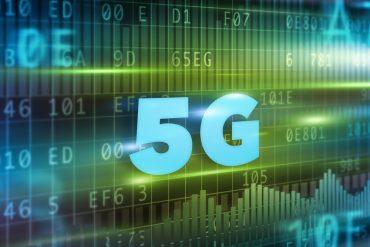
With edge computing, workloads, storage, and networking infrastructures are moved closer to the sensors, actuators, and other IoT devices that generate and use that data.
Moving to the cloud isn’t the only way to relieve overburdened data centers from rising processing loads – there now is what may be a more suitable alternative. Edge computing promises faster access and information processing than either on-premises or cloud data centers can offer.
Featured Resource: The Edge Cloud - Enabling an Intelligent Digital World [Download Now]
That’s the theme of a series of reports published by the Industrial Internet Consortium (IIC) in the group’s the Journal of Innovation. “In today’s networks, most compute workloads run in cloud data centers,” writes Charles Byers, associate chief technical officer for the IIC, in the group’s journal. “This is changing, as many critical requirements are not met in the cloud, and many of these workloads are moving completely or in part to edge computing.”
With edge, “computational workloads, storage capabilities, and networking infrastructures typically found in cloud data centers and moving them physically and logically closer to the sensors, actuators, and other IoT devices that generate and use the data,” said Byers.
This doesn’t mean moving everything to the edge – there are optimum locations for processing along a spectrum of environments, from centralized clouds or data centers to remote sensors. Managers need to calculate the costs and benefits inherent in moving workloads across this spectrum, Byers says. “By taking a fresh, focused look at the key performance indicators and system-level requirements of networks, it is possible to optimize the performance, trustworthiness, and lifecycle cost of applications by segmenting workloads between cloud data centers and execution on edge nodes,” he explains. “If the partitioning of computational workloads and storage operations between cloud data centers, edge computing nodes, and intelligent devices is carefully considered, IoT networks will be better able to service their critical applications.”
In a separate analysis, a team of co-authors led by Thiago Weber Martins of SAP discussed how cloud orchestration solutions could drive Industry 4.0 efforts, outlining the advantages edge computing provides these efforts.
- Flexibility: “Applications can be deployed, orchestrated, and managed on edge devices with a variety of processing and storage capabilities.”
- Scalability: “Deployment and configuration of business applications are individualized according to customer-specific need and scenario as well as connectivity availability.”
- High availability: “Capabilities of Kubernetes can be leveraged to create high availability configurations for edge computing deployments. High availability configurations optimize response times and minimize downtime and are crucial in mission-critical scenarios.”
- Faster response times: “Edge computing enables real-time decision-making capabilities within manufacturing processes to ensure business continuity and even if intermittent connectivity, limited bandwidth, and latency occurs.”
- Low TCO: “Via simplified lifecycle management and orchestration of high complex topologies edge nodes from the cloud.”
- Better customer experience: “Optimal balance between standardized components and in-creased customer experience via simplified configuration of business application for specific scenarios.”
Martins and his co-authors say the success of edge still hinges on “the establishment of de-facto standards to address the heterogeneous edge computing landscape, to avoid lock-in effects and node to node interoperability.” Also critical will be the development of Asset Administration Shell and edge computing, which supports “digital twin across all phases of design to operate (D2O),” they point out.
Featured Resource: The Edge Cloud - Enabling an Intelligent Digital World [Download Now]







